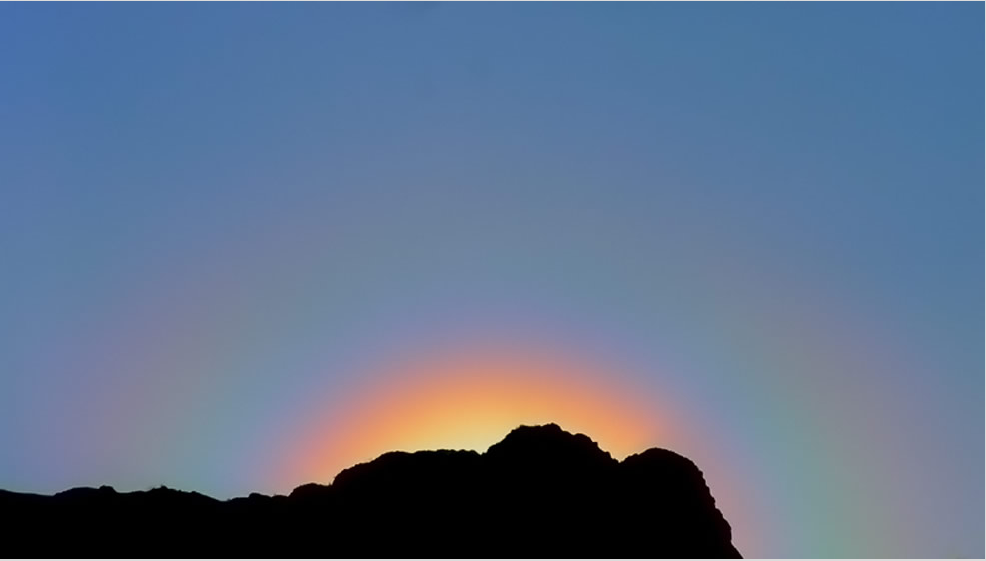Corona, Breil-sur-Roya, France
Corona, Breil-sur-Roya, France: A Spectacular Atmospheric Phenomenon
Have you ever looked up at the sky and witnessed a stunning display of colors surrounding the sun or moon? One such mesmerizing atmospheric phenomenon is the corona. In this article, we will explore the corona observed in Breil-sur-Roya, a picturesque town in South-East France. Let's delve into the details of this captivating optical spectacle.
The corona is formed when sunlight or moonlight interacts with water droplets or ice crystals suspended in the atmosphere. These tiny particles act as miniature lenses, bending and scattering light rays in various directions. As a result, a circular ring of colors is formed around the celestial body, creating a breathtaking sight for observers on the ground.
Vincent Jacques, an avid skywatcher, captured a remarkable image of the corona at Breil-sur-Roya in February '06. By carefully analyzing the ring radii and employing IRIS simulations, Jacques estimated that the droplets responsible for creating the corona had a diameter of approximately 28 microns. This finding highlights the delicate nature of these water droplets and their crucial role in shaping the appearance of the corona.
To better understand the corona phenomenon observed in Breil-sur-Roya, let's explore some key characteristics and factors that influence its appearance:
-
Particle Size Distribution: The size distribution of the water droplets or ice crystals in the atmosphere plays a vital role in determining the size and intensity of the corona. Smaller particles tend to produce more vivid and colorful coronae, while larger particles may result in a less pronounced effect.
-
Wavelength Dependence: The colors observed in the corona are highly dependent on the wavelength of light. Shorter wavelengths, such as blue and violet, are scattered more strongly by the particles, leading to a bluish inner region of the corona. In contrast, longer wavelengths, such as red and orange, are scattered less, resulting in a reddish outer region.
-
Solar Altitude: The altitude of the sun or moon above the horizon affects the shape and size of the corona. When the celestial body is near the horizon, the corona tends to appear larger and more elongated, while at higher altitudes, it appears smaller and more circular.
-
Atmospheric Conditions: The presence of moisture, dust, and pollutants in the atmosphere can influence the visibility and intensity of the corona. Clean air with minimal atmospheric interference typically enhances the clarity and brilliance of the corona.
Breil-sur-Roya, with its serene surroundings and clear skies, provides an ideal location for observing and photographing the corona phenomenon. The breathtaking natural beauty of this region further enhances the allure of witnessing such a captivating optical spectacle.
For sky enthusiasts and photographers, capturing the corona at Breil-sur-Roya can be an exhilarating experience. The interplay of light, water droplets, and atmospheric conditions creates a myriad of intricate patterns and colors. It is an opportunity to marvel at the wonders of nature and appreciate the intricate mechanisms that give rise to these celestial displays.
In conclusion, the corona observed in Breil-sur-Roya, France, is a truly awe-inspiring atmospheric phenomenon. Through the skillful photography of Vincent Jacques, we are able to witness the delicate beauty of this optical spectacle. Understanding the factors that shape the appearance of the corona allows us to appreciate the intricate dance of light and particles in our atmosphere. So, next time you find yourself gazing up at the sky, keep an eye out for the mesmerizing corona and let it remind you of the wonders that lie above us.

Corona at Breil-sur-Roya, South-East France imaged by Vincent Jacques (site) in February '06. By matching the ring radii with IRIS simulations he estimated that the droplets creating the corona were 28 micron diameter. Image ©Vincent Jacques , reproduced with permission.
Note: this article has been automatically converted from the old site and may not appear as intended. You can find the original article here.
Reference Atmospheric Optics
If you use any of the definitions, information, or data presented on Atmospheric Optics, please copy the link or reference below to properly credit us as the reference source. Thank you!
-
<a href="https://atoptics.co.uk/blog/corona-breil-sur-roya-france/">Corona, Breil-sur-Roya, France </a>
-
"Corona, Breil-sur-Roya, France ". Atmospheric Optics. Accessed on November 26, 2024. https://atoptics.co.uk/blog/corona-breil-sur-roya-france/.
-
"Corona, Breil-sur-Roya, France ". Atmospheric Optics, https://atoptics.co.uk/blog/corona-breil-sur-roya-france/. Accessed 26 November, 2024
-
Corona, Breil-sur-Roya, France . Atmospheric Optics. Retrieved from https://atoptics.co.uk/blog/corona-breil-sur-roya-france/.